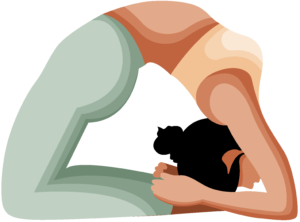Full Camel Pose (Paripurna Ustrasana)
Pose Overview
| Common Name | Full Camel Pose |
| Traditional Sanskrit Name | Paripurna Ustrasana |
| Sanskrit Name Pronunciation | PAH-ree-poo-ruh-NAH oos-TRAHS-ah-nuh |
| Pose Difficulty | Advanced |
| Drishti
Drishti is the gaze or visual focus point during yoga poses.
Learn more about Drishti |
Upward, towards the sky |
Full Camel Pose, also known as Paripurna Ustrasana, is a dynamic and deep backbend that provides a full-body stretch and strengthens the muscles in your neck, back, and hips. It is a challenging pose that requires strength, flexibility, and stability. The pose is named after the camel, as it resembles a camel kneeling down and stretching its neck. This pose is considered a heart-opener and can help to reduce stress and anxiety, improve posture, and stimulate the digestive system.
Benefits of Full Camel Pose
Stretches the neck, back, and hips Improves posture Reduces stress and anxiety Stimulates the digestive system Strengthens the muscles in the neck, back, and hips Opens the heart chakra and improves emotional well-being
How to Enter Full Camel Pose
Start in a kneeling position with your knees hip-width apart and your hands on your hips. As you inhale, press your hands into the ground and lift your chest and head towards the ceiling. Reach your hands back towards your feet, keeping your elbows close to your sides. Hold onto your heels and release your head back, keeping your gaze towards the ceiling.
How to Exit Full Camel Pose
To release the pose, bring your hands back to your hips. Slowly lower your head and chest back down to the ground, keeping your gaze forward. Return to a kneeling position and rest for a few breaths.
Common Full Camel Pose Modifications & Variations
For a gentler version of the pose, keep your hands on your lower back instead of reaching for your heels. To deepen the stretch, try reaching for the outside of your feet instead of your heels.
Common Mistakes with Full Camel Pose
Arching the lower back excessively Pushing too hard into the pose, causing strain on the neck and back Rounding the shoulders or hunching forward
Safety Guidance
If you have any neck or back injuries, it is best to avoid this pose or practice it under the guidance of a qualified yoga instructor. Make sure to move into and out of the pose slowly and mindfully, to avoid any sudden movements that could cause strain or injury.

